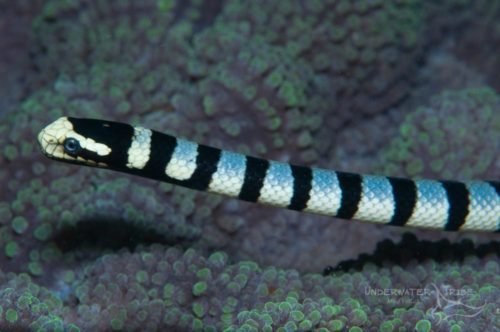Snakes can stay underwater for an impressive amount of time, thanks to their remarkable adaptations. How long can snakes stay underwater? The answer lies in their ability to hold their breath for extended periods, aided by specialized lung structures. This unique skill allows them to navigate aquatic environments with ease, surprising many with their aquatic prowess. Let’s delve deeper into the fascinating world of snakes and uncover the secrets behind their remarkable underwater capabilities.
The Fascinating World of Snakes: How Long Can They Stay Underwater?
Exploring Snakes’ Underwater Abilities
Snakes are truly remarkable creatures that can surprise us with their unique adaptations. One of the most intriguing aspects of snakes is their ability to stay underwater for extended periods. Have you ever wondered how long a snake can hold its breath and move gracefully beneath the water’s surface? Let’s dive into the watery world of snakes to uncover the secrets of their underwater prowess!
The Physiology of Snakes
Before we delve into the specifics of how long snakes can stay underwater, let’s first understand a bit about their physiology. Snakes belong to the reptile family and have some fascinating adaptations that allow them to thrive in various environments, including water.
Unlike humans, snakes do not have gills to breathe underwater. Instead, they rely on a specialized respiratory system that enables them to hold their breath for extended periods while submerged. Snakes have a unique set of lungs that are elongated and can accommodate more air than our human lungs, allowing them to store oxygen efficiently.
Factors Affecting Snakes’ Underwater Abilities
Several factors influence how long snakes can stay underwater. One crucial factor is the species of the snake. Some snake species have evolved to spend more time in the water than others, equipping them with better underwater survival skills.
Size and Age
In general, larger snakes tend to have greater lung capacity and can, therefore, hold their breath longer underwater. Younger snakes may not have fully developed respiratory systems, so they may not stay submerged for as long as adult snakes.
Adaptations and Behavior
Snakes that are adept at swimming and hunting underwater, such as sea snakes, have specialized adaptations that allow them to thrive in aquatic environments. These adaptations may include streamlined bodies, flattened tails for propulsion, and the ability to slow down their metabolism to conserve oxygen.
Maximum Duration Underwater
While the exact time that snakes can stay underwater varies depending on the factors mentioned above, some snake species have been known to hold their breath for astonishing periods. For example, sea snakes, which are fully aquatic, can remain submerged for up to several hours before resurfacing to breathe.
Even non-aquatic snake species, such as the common garter snake, can surprise us with their ability to stay underwater. Garter snakes have been observed holding their breath for over 30 minutes while hunting for fish and amphibians in ponds and streams.
Adaptations for Underwater Survival
Snakes have evolved various strategies to enhance their underwater survival skills. One of the key adaptations is the ability to slow down their metabolic rate while submerged. By reducing their oxygen consumption, snakes can prolong the time they spend underwater without the need to breathe.
Additionally, some snake species can absorb oxygen through their skin while underwater, further extending their ability to stay submerged. This process, known as cutaneous respiration, allows snakes to extract oxygen from the water, supplementing their respiratory needs.
Behavioral Patterns Underwater
When snakes are underwater, they exhibit fascinating behavior patterns that help them navigate and hunt effectively. Some snakes use their tongues to sense chemical cues in the water, helping them locate prey even in dimly lit environments.
Other snakes, like the anaconda, are ambush predators that lie in wait underwater for unsuspecting prey to come within striking distance. By blending in with their surroundings and remaining motionless, these snakes can surprise their prey with lightning-fast strikes.
Snakes are truly remarkable creatures with a diverse range of adaptations that enable them to thrive in various environments, including underwater. While the duration that snakes can stay underwater varies among species, it’s clear that these fascinating reptiles have evolved incredible strategies to enhance their survival skills beneath the water’s surface.
Next time you see a snake slithering near a body of water, take a moment to appreciate its incredible abilities to remain submerged and navigate its aquatic world with grace and efficiency!
Can Sea Snakes Breathe Underwater?
Frequently Asked Questions
How long can snakes hold their breath underwater?
Snakes can typically hold their breath underwater for around 10-15 minutes, although some species have been known to stay submerged for up to an hour. This ability varies among different snake species and is influenced by factors such as the snake’s size, metabolism, and level of activity.
What adaptations allow snakes to stay underwater for extended periods?
Snakes have several adaptations that enable them to survive underwater for extended periods. These include the ability to slow down their metabolic rate, efficient oxygen utilization, and specialized respiratory systems that allow them to exchange gases efficiently during prolonged submersion.
Do all snakes have the same capacity to stay underwater?
No, not all snakes have the same capacity to stay underwater. Aquatic and semi-aquatic snake species tend to have better adaptations for underwater survival compared to terrestrial species. Some water-dwelling snakes, like sea snakes, have evolved to spend the majority of their lives in water and have developed exceptional abilities to stay submerged for extended periods.
Final Thoughts
In conclusion, snakes can stay underwater for extended periods due to their ability to hold their breath. The duration varies among species and can range from a few minutes to several hours. Snakes have adapted to survive underwater by slowing down their metabolism and conserving oxygen. Understanding how long snakes can stay underwater is essential for their conservation and management in aquatic environments.

